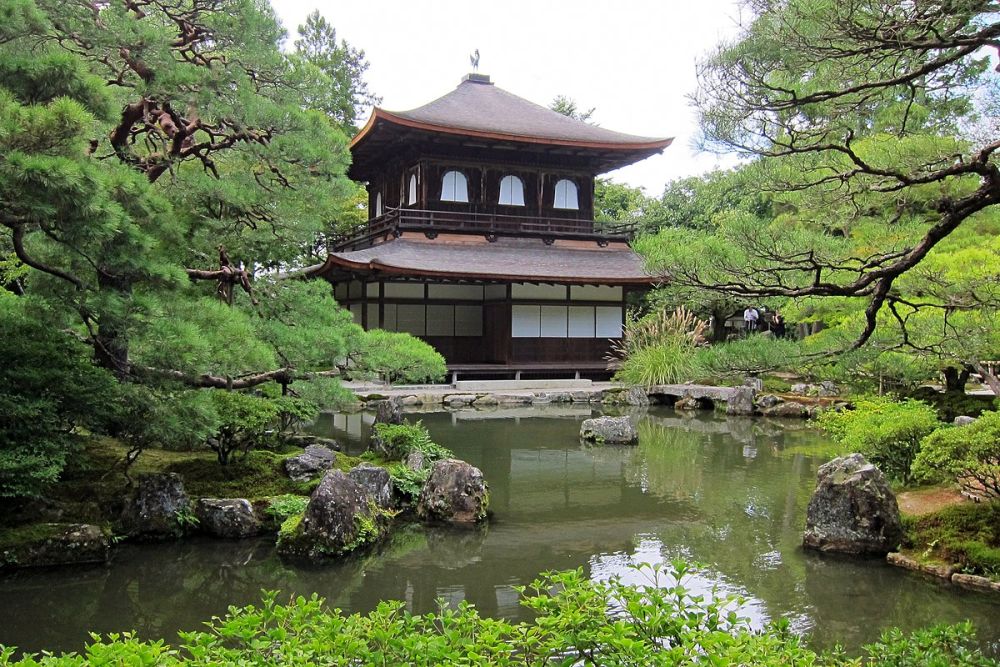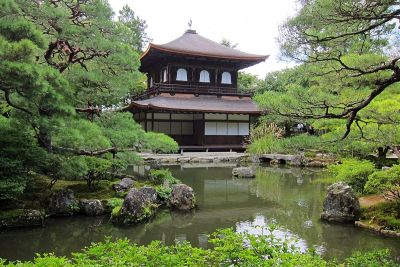

The Ginkakuji Temple, also known as the Silver Pavilion, stands as an epitome of tranquility and is a key highlight in the Higashiyama District of Kyoto. This Zen temple, officially named Jisho-ji, was originally constructed as a retirement villa for the shogun Ashikaga Yoshimasa in 1482. The intention was to cover it in silver, echoing the Golden Pavilion (Kinkakuji), but this plan never materialized, giving the pavilion a more subdued elegance. Visitors can indulge in a leisurely stroll while absorbing the quintessence of Zen design within its gardens. The dry sand garden, known as the 'Sea of Silver Sand,' with the perfectly shaped cone named 'Moon Platform,' is a marvel in landscape artistry. The moss garden, teeming with verdant hues, and a variety of meticulously maintained plant species, complements the tranquil scenery. A tour of Ginkakuji offers an intimate look into Japan's cultural history and the evolution of Japanese garden design.
Adjacent to the serene Ginkakuji, the Philosopher's Path (Tetsugaku no michi) offers a meditative experience alongside a cherry tree-lined canal. The two-kilometer path follows a route historically taken by one of Japan's most famous philosophers, Nishida Kitaro, for daily reflection. The path becomes exceptionally picturesque during cherry blossom season in spring, when the blooms create a canopy of soft pink hues, making it a magnet for photographers and nature enthusiasts alike. While the path can be explored in solitude, guided tours may provide deeper insight into its historical significance and surrounding cultural spots. Walking the Philosopher's Path not only connects you with Kyoto's natural beauty but also with traditional cafes, quaint boutiques, and minor temples and shrines tucked away from the main trail.
Dive into the rich cultural tapestry of Japan with a hands-on workshop at Ginkakuji. These workshops vary from traditional Japanese arts such as calligraphy, the delicate art of arranging flowers in Ikebana, to the ceremonious preparation of matcha in a tea ceremony. Each workshop is led by masters who not only explain the historical background and significance of these cultural practices but also guide participants through the proper techniques and etiquettes. Engaging in such an activity offers a unique takeaway — an appreciation for the meticulous attention to detail and the philosophical approach to simplicity and aesthetics that embody Japanese culture.
Ginkakuji's striking environment presents an excellent opportunity for both amateur and professional photographers. The temple and its gardens boast a variety of impressive sights, from the Silver Pavilion itself, poised with a quiet dignity among the carefully sculpted gardens, to the rolling landscapes and artfully placed stone arrangements within the moss garden. Photography enthusiasts can capture the Ginkakuji in different seasons, each offering a unique perspective — whether it's the lush greenery of summer, the vibrant autumn leaves, or the serene snow-dressed sights of winter. Photo tours are available for those seeking professional guidance on techniques while capturing the historical and natural beauty of this World Heritage Site.
